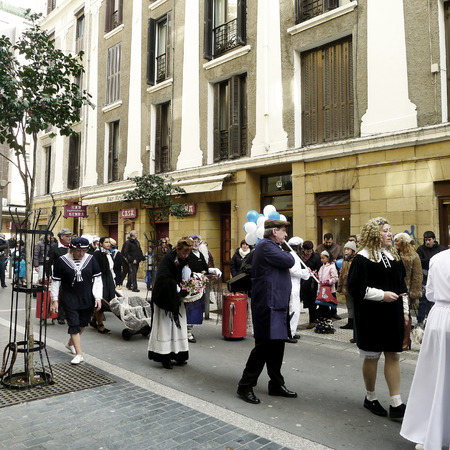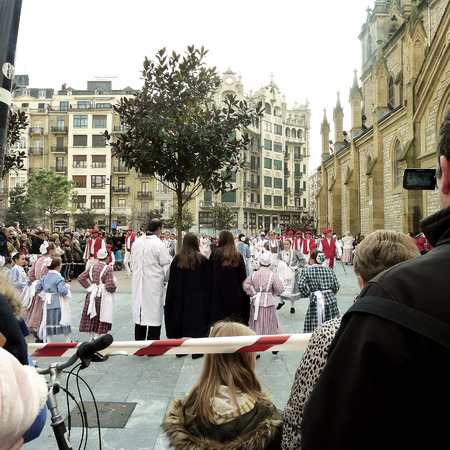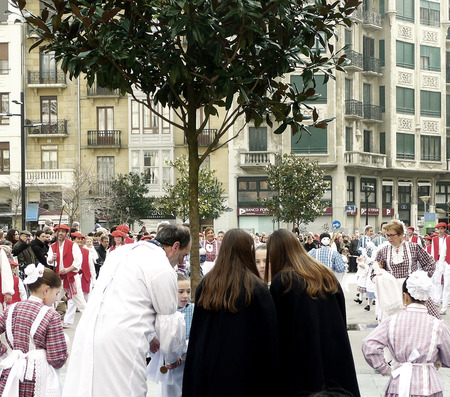Iñudes y Artzaias
Even after living here for nearly five years, I can still be surprised. And be surprised to be surprised by, of all things, wet nurses and shepherds.
After gathering for breakfast on Sunday morning, to say goodbye to a dear friend, we set off to see a concert in one of Gros's liveliest venues, Garoa. We were distracted by some music on the street, and like the children of the pied piper, we followed the sound. Needless to say, we weren't expecting to stumble upon a parade of Belle Epoque characters —women dressed in white, wielding tennis racquets, a bishop waving a giant sub sandwich, and several women dressed as nannies, carrying baby dolls.
It's a parade that celebrates the Belle Epoque of San Sebastián, and features caricatures of all its wackiest characters, waving and prancing through the streets of both Gros and the Old Part.
Depending on which song you catch the parade at, you might see baby dolls flying in the air. Or nannies flirting with shepherds. Or perhaps you will see the nannies carrying their babies to the doctor, to receive vaccinations and check on their health, before they stop at the priests to receive a blessing. But always, the parade starts with a rendition of 'Festarik Behar Bada', whose title in translation ("Yes You Gotta Party", more or less) sounds more Black Eyed Peas than Basque.
The history of the parade is one that began over 125 years ago, on February 2, 1885, set around the Feast of the Candelaria, a Roman Catholic celebration of a sighting of the Virgin Mary. However, the tradition diminished after Pope Pio XII took away the feast day status of the holiday, and nearly disappeared before the Kresala society brought it back in 1977.
In San Sebastián, the celebration is set to music of the beloved composer Raimundo Sarriegi, who composed the anthem of the city that resounds all day long on the 20th of January and yearlong in the hearts of all Donostiarras, #ak. Apart from the nannies and shepherd characters for which the celebration is named, mayors, secretaries, bishops, shoe cleaners, bakers, street sweepers, and other characters from the Belle Epoque of Donosti take the stage.
Stuffed between Caldereros and Carnavales, it's another event to help mark the slow passing of winter in Basque Country.




